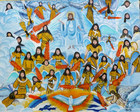From Realms of Glory
So much has been written about angels that even foolish writers fear to tread on such well-walked terrain. We, humans, cannot seem to get enough of these mysterious supernatural beings who move so effortlessly between the Realms of Glory and Planet Earth on heavenly missions. Everyone knows someone who knows somebody who has been touched by an angel. Some of us even have our own stories to tell about an unseen hand, pulling us back from the brink, or a helpful stranger in time of need who vanishes without a trace. As I write this reflection, the New York Times paperback nonfiction bestseller list is topped by Heaven is for Real, a book about “a boy’s encounter with Jesus and the angels.” And not for the first time!
Whether it be Paradise Lost or It’s a Wonderful Life, angels figure prominently in Western culture. Cut angels out of the picture in the visual arts, and there would be tens of thousands of gutted canvases in our greatest art collections. In my travels, I have marveled at the iridescent wings of the Angel Gabriel in Fra Angelico’s Annunciation fresco in Florence and stood in wonder before the magisterial Archangel Michael in Rogier van der Weyden’s Last Judgment altarpiece in Beaune, France, but overexposure to cloying, chubby-cheeked copies of Raphael’s Sistine Madonna cherubs left me completely uninterested in collecting sacred art with angels.
Talking with Rudolph Valentino Bostic changed all that. When this self-taught painter from Savannah, Georgia, explains how God’s heavenly messengers bestow “blessings multiplied” on humanity, you can almost feel their presence in the room. He is not the only contemporary art-maker to see angels. The works of three fellow Southerners, Howard Finster, Purvis Young, and Myrtice West, also abound with personal visions of the hosts of heaven. West even signed her paintings with tiny angels. Halfway around the world, Romanian Artist Ovidiu Kloska has created a whole series of hallucinatory drawings of winged figures, far removed from kitsch art cherubs. And the list goes on.
There are traces of angels to be found everywhere you look in human civilization. Winged demi-gods appear in the sacred art of the Sumerians and Egyptians. The Greeks depicted Hermes, the messenger of the gods, with winged helmet and boots. Guardian spirits, known as fravashi, can be found among the Zoroastrians, while the Hindus and Buddhists believe in devas. For Hindus, they are demi-gods who maintain the cosmos. In Buddhism, they are enlightened beings who live apart from the realm of human affairs. Angels frequently appear in the Koran. The Prophet Mohammed was accompanied on his ascension to the Seventh Heaven by the Angel Gabriel.
The angels I know best populate the pages of the Hebrew and Christian Scriptures. My first visual memories of them come from Children’s Bible Story Book illustrations and Sunday School newspapers, where they were always depicted as fair young men in flowing white garments with wings sprouting from their backs. Angels are present on the opening pages of the Bible and on the very last. They stand with a flaming sword, protecting the entrance to the Garden of Eden in Genesis and defeat Satan, a “fallen angel” who wanted to usurp the throne of God, at the culmination of human history in Revelation. There are close to 300 references to angels in the Old and New Testaments.
The English word “angel” comes from the Greek, angelos, meaning “messenger.” They function in the Bible as a divine news service, announcing long-desired births to childless parents in the stories of Isaac (Genesis 18:1-15), Samson (Judges 13), and John the Baptist (Luke 1:5-20), or proclaiming victories in battle to Joshua (Joshua 5:13-15) and Gideon (Judges 6:11-24) They offer glimpses of the future in Jacob’s dreamed epiphany about the nation of Israel (Genesis 28:10-17) and in apocalyptic messages to the Prophet Daniel (Daniel 10-12). Angels also warn of imminent danger, instructing Joseph in a dream to escape the wrath of King Herod and flee with the baby Jesus to Egypt (Matthew 2:13).
The Gospel narratives of the life of Christ begin and end with angelic emissaries. An angel appears to the Virgin Mary to prepare her for Jesus’ miraculous birth (Luke 1:26-38) and assures Joseph in a dream that the child is of God (Matthew 1: 18-24). Christ’s coming into the world is proclaimed to shepherds in the fields outside Bethlehem by “a multitude of the heavenly host (Luke 2:13, KJV)." Then, on Easter morning, one (Matthew 28, Mark 16) or two (Luke 24, John 20) angels announce the Resurrection of Christ to the women who come to the tomb to anoint his body. After Jesus ascends into heaven, two angels appear to tell his disciples he will return “in like manner as you have seen him go into heaven (Acts 1:11, KJV).”
Angels also keep watch over humanity in their role as “ministering spirits sent to serve those who will inherit salvation (Hebrews 1:14, NIV).” In the words of the Psalm writer, God “shall give his angels charge over thee, to keep thee in all thy ways (Psalm 91:11, KJV).” The notion that we are assigned a Guardian Angel at birth is based on Jesus’ admonition not to offend the little children of this world because “their angels in heaven always see the face of my Father in heaven (Matthew 18:10, NIV).” Angels, certainly, make up a celestial cheering section for fallen humankind. As Christ teaches, “there is rejoicing in the presence of the angels of God over one sinner who repents (Luke 15:10, NIV).”
The Bible is full of tales of angelic intervention to help God’s people in times of trouble. Two angels escort Lot and his family out of the doomed city of Sodom (Genesis 19). A heavenly messenger delivers baked cakes and a jug of water to the despairing Prophet Elijah in his wilderness hide-out (I Kings 19). When Daniel is thrown into the lions’ den, an angel shuts the mouths of the beasts (Daniel 6). In New Testament times, the Apostle Peter is freed from prison twice by angels (Acts 5: 18-19; Acts 6) and St. Paul receives angelic assurance that he will survive a storm at sea (Acts 27). Jesus, himself, is comforted by angels, following his temptation in the wilderness (Mark 1:13) and during his ordeal in the Garden of Gethsemane (Luke 22:43).
Before we get too cozy in the company of the heavenly hosts, we must not forget they are also instruments of divine justice. To punish Pharaoh for refusing to allow the Children of Israel to leave Egypt, an Angel of Death comes by night to kill all first-born males, man and beast, in the land (Exodus 12: 23). In Christ’s Parable of the Wheat and the Tares, angels are the harvesters at the end of time who will separate out evil-doers from the righteous like weeds from scythed wheat and cast them into the fiery furnace (Matthew 13:24-20; 36-43). Seven angels, blowing seven trumpets (Revelation 8:6-9, 10:15-19), and seven angels with seven vials “of the wrath of God” (Revelation 16), wreak death and destruction on the earth in the apocalyptic visions of John on Patmos, recorded in the last book of the Bible.
Two (or three) angels are named in the Bible, depending on what scriptural canon you accept. Michael (from the Hebrew, “who is like God?”) is identified as an Archangel in Jude 1:9, contending with Satan for the body of Moses. The Prophet Daniel hears about Michael, “one of the chief princes,” waging divine warfare against the Prince of Persia (Daniel 10:13, 21: 12:1). Michael also leads an army of angels against the dragon (Satan) in Revelation 12:7. Gabriel (from the Hebrew, “strength of God”) figures, as well, in Daniel’s prophetic visions (Daniel 8:16, 9:21) and is named as the angel who brings news of the births of John the Baptist (Luke 1:19) and Jesus (Luke 1:26) in the New Testament. A third angel, Raphael (from the Hebrew, “God heals“), travels with the young Tobias in Tobit, a book not included in the Jewish or Protestant Scriptures.
Some angelic visitations in the Bible are believed to be “theophanies,” moments when God appeared on earth, taking the form of “the Angel of the Lord.” When Abraham raises the knife to slay his son, Isaac, he is stopped by the Angel of the Lord calling to him from heaven (Genesis 22:11-12). Moses sees the Angel of the Lord in the fiery bush, when he is called to lead the Children of Israel out of Egypt (Exodus 3:2). Jacob’s night time wrestling match with the mysterious stranger, recorded in Genesis 32:24-30, is another example of a divine appearance. Some Bible scholars associate these supernatural events with the Second Person of the Trinity, considering them to be a foreshadowing of the incarnation of Christ.
Angels are created beings and not reproductive. In Jesus’ words: “At the resurrection people will neither marry nor be given in marriage; they will be like the angels in heaven (Matthew 22:30, NIV).” They number “ten thousand times ten thousand,and thousands of thousands (Daniel 7:10; Revelation 5:11, KJV)", which is a biblical way of saying there are too many of them to count. And there are different kinds of them. In addition to angels and archangels, the Bible mentions seraphs (Isaiah 6:1-7) and cherubs (Ezekiel 10), who attend the throne of God in heaven. Working from two passages in the Epistles of St. Paul (Ephesians 1:21; Colossians 1:16) medieval theologians expanded the list of angelic orders to include thrones, dominions, authorities (virtues), powers, and principalities.
The artistic convention of portraying angels with wings comes from visionary passages in the prophetic books of Isaiah, Ezekiel, and Revelation. Isaiah sees seraphs hovering above the throne of God with six wings, two to fly, two to cover their faces, and two to cover their feet (Isaiah 6:2). Ezekiel describes “living creatures,” having four faces and four wings, moving among interconnected wheels (Ezekiel 1:4-28)--a favorite passage of UFO enthusiasts--who are later identified as cherubs (Ezekiel 10). The book of Revelation also mentions mysterious beings with six wings, having the likenesses of a lion, calf, man, and eagle (Revelation 4: 6-11).
There is no mention of wings in other angelic appearances in the Bible. In the Resurrection stories angels take the form of young men in white garments (Mark 16 :5) They appear to have the ability to move about the earth unrecognized. When we offer hospitality to strangers, we may even be entertaining “angels unawares (Hebrews 13:2, KJV),” the theme of a series of images by Kentucky Folk Artist Joan Dance.
Angels have figured in sacred art, ever since two gilded cherubs were made to adorn the Ark of the Covenant, the portable altar the Children of Israel took with them to the Promised Land (Ezekiel 25:18-22). The heavenly beings on view in this gallery from the Sacred Art Pilgrim Collection are the work of contemporary artists, except for one saccharine vintage print of a Guardian Angel from the 19th century, which I have included as a point of reference for considering just how far angel iconography has evolved in the modern era.
Depending on your taste in art, you will find the good, the bad, and the ugly among these images of the hosts of heaven. They represent a variety of artistic traditions from fine art to folk art and cultures from Romania to Panama. For the most part, they have one thing in common. With the exception of two studies of the Archangel Michael as a medieval knight in shining armor, the Joan Dance angel painting, and a curious print by British Artist A. Studing of an angel of pure action composed simply of head, foot and hand, all the divine emissaries on display are depicted with wings in some shape or form.
Quotations from The Holy Bible in the King James Version, [KJV](Thomas Nelson: 1976) and The Holy Bible: New International Version, [NIV](New York Bible Society International: 1973)
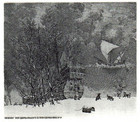
Konstantin Kalynovych
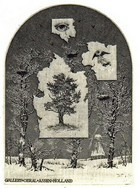
Konstantin Kalynovych
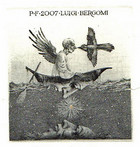
Konstantin Kalynovych
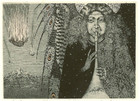
Konstantin Kalynovych
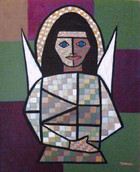
Frank Humphrey Allen

Antanas Kmieliauskas
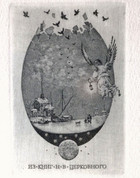
Konstantin Kalynovych

Konstantin Kalynovych

Konstantin Kalynovych
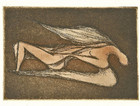
Kristian Kodet
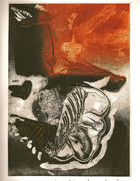
Luis Miguel Valdez
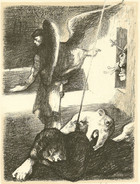
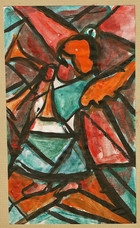
Josephine Mahaffey
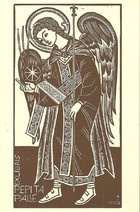
Oriol Maria Divi
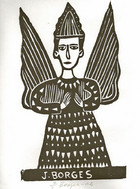
Jose Francisco Borges
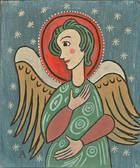
Frank Humphrey Allen
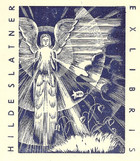
Hubert Woyty-Wimmer
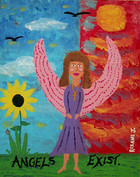
Roxane J.

Konstantin Kalynovych
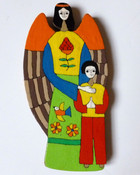
Unknown Salvadoran Artist
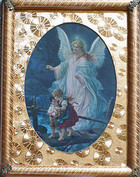
Unknown European Artist
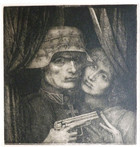
Ernst Fuchs
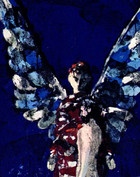
Max Hunziker
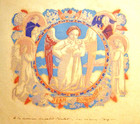
Maurice Denis
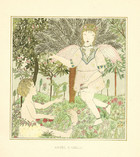
Pamela Ruby Bianco
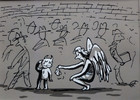
Andrey Feldshteyn
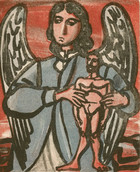
Max Hunziker
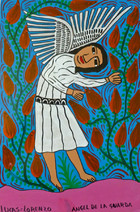
Lucas Lorenzo
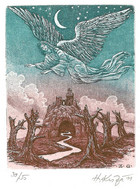
Herbert Kisza
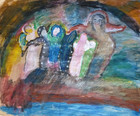
Katya Medvedeva
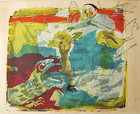
Sister Mary Corita Kent
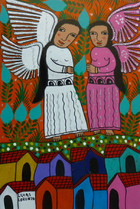
Lucas Lorenzo
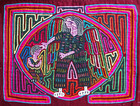
Unknown Kuna Artist

A. Studing
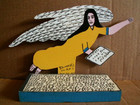
Howard Finster
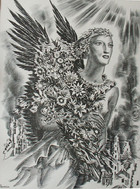
Albert Decaris
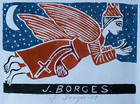
Jose Francisco Borges
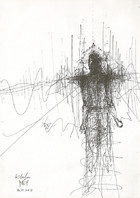
Ovidiu Kloska
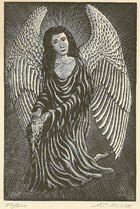
A. C. "Tony" Kulik

Myrtice West
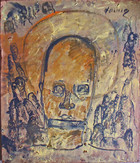
Purvis Young
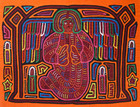
Unknown Kuna Artist
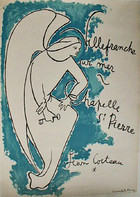

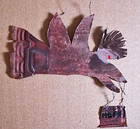

Jean-Pierre Stholl
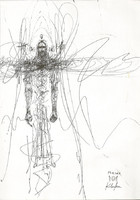
Ovidiu Kloska

Robert Wolverton Jr.
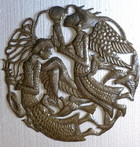
Unknown Haitian Artist
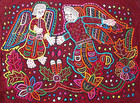
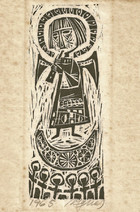
Vytautas Ignas
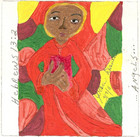
Joan Dance

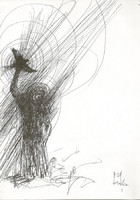
Ovidiu Kloska
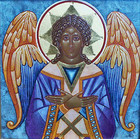
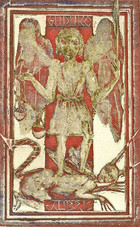
Antanas Kmieliauskas
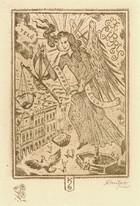
Jan Konupek
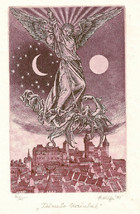
Herbert Kizsa
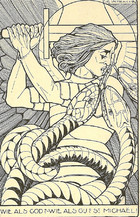
Jos Speybrouck

Unknown Ethiopian Artist
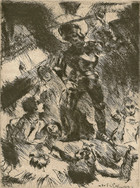
Lovis Corinth
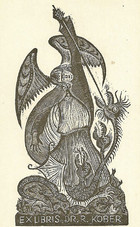
W. Michaels
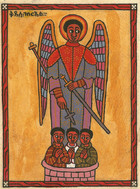
Unknown Ethiopian Artist

John Kohan
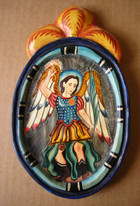
James Cordova
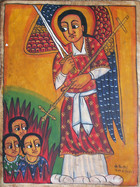
Unknown Ethiopian Artist

Gabriel Vigil
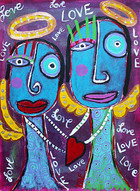
Tracey Ann Finley
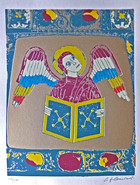
Josef Albert Slominski
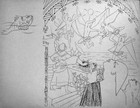
Jean Cocteau
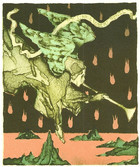
Vladimir Suchanek

Ruth Starr Rose
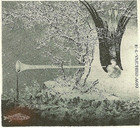
Konstantin Kalynovych

Rudolph Valentino Bostic
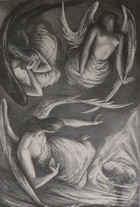
Benton Spruance
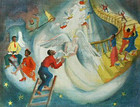
Ruth Starr Rose
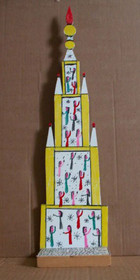
Howard Finster
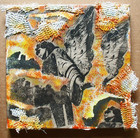
Col Creamcrop Scott
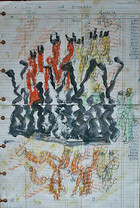
Purvis Young
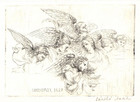
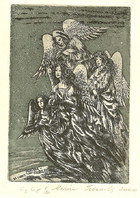
Marina Terauds
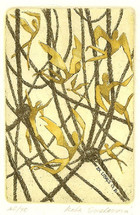
Katerina Smetanova
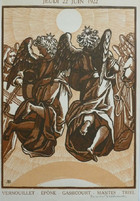
Jacques Beltrand

Benton Spruance
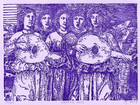
Tyrus Clutter

Fernando Ronchetti
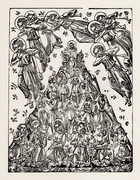
Elisabeth Voigt

Rudolph Valentino Bostic

Natalya Rusetska
